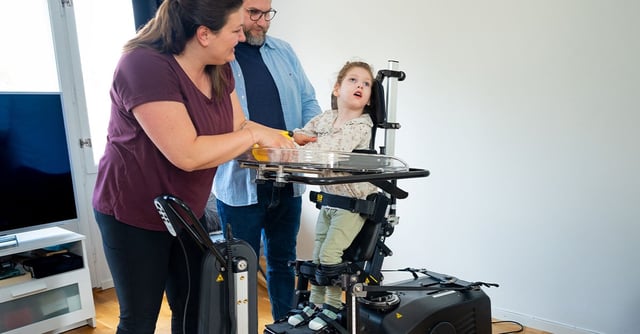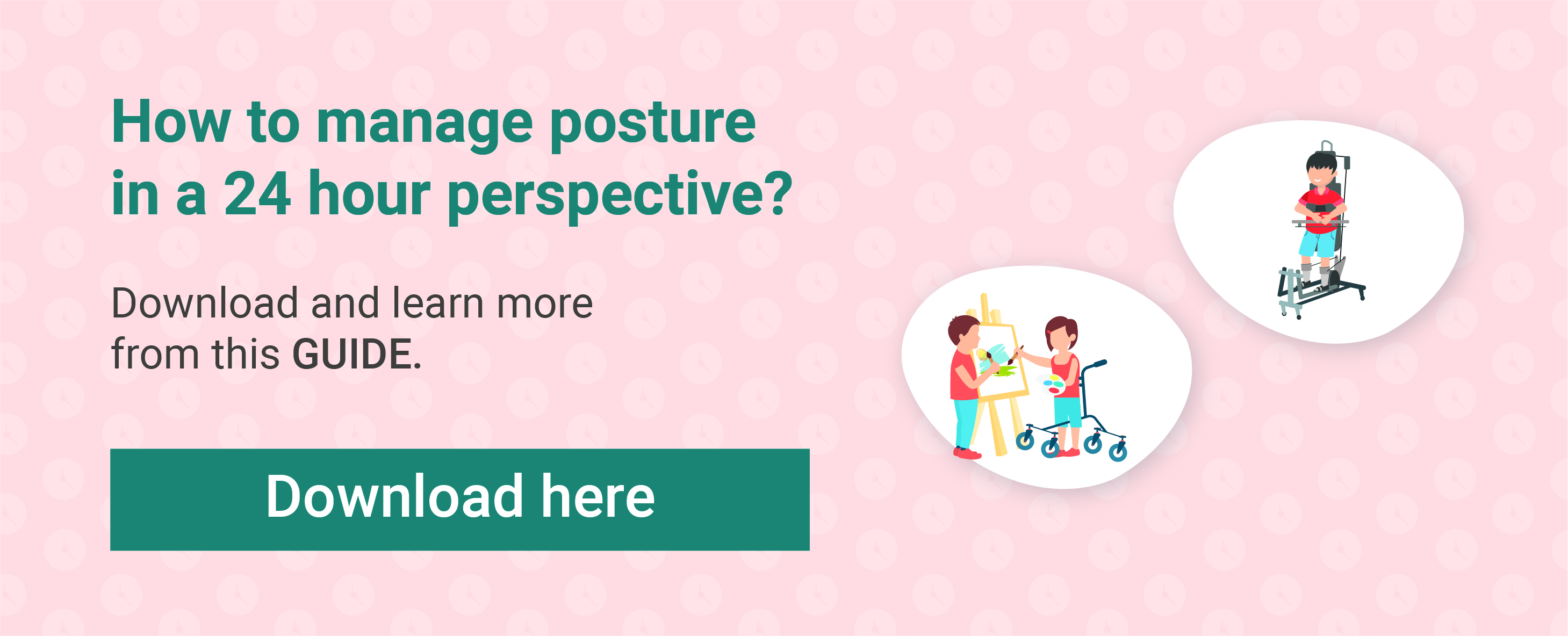
Children with physical disabilities who are unable to stand and move independently spend a lot of time in a sedentary position, and therefore rely on postural support equipment and mobility aids to help them to move into different body positions.
In this article you can read about:
- What is a standing frame?
- Why is upright standing so important?
- What is the difference between static and dynamic standing frames?
- Which type of standing frame should I choose to my child?
- Static standing frames
- The dynamic standing frame - Innowalk
- How and where should a standing frame be used?
What is a standing frame?
A standing frame is a piece of equipment used to help support your child in an upright position, allowing him/her to bear weight through the legs and feet. There are many types of standing frame available, which can be adapted to suit children with varying ability and postures.
Why is upright standing so important?
The best defence against body shape changes for individuals with disabilities is movement or change of position. Upright standing is an essential milestone in gross motor development and benefits the body both physically and mentally.
Some of the benefits of upright standing include:
- bone and joint health
- trunk and head control
- circulation
- digestion
- respiratory function
- self-esteem
- visual motor control
- social interaction
What is the difference between static and dynamic standing frames?
Static standing frames support your child in an upright, stationary standing position without any ability for him/her to move the limbs. These frames usually provide support at the feet, knees, chest and pelvis to maintain a posture that is as neutral and aligned as possible for the child.
Dynamic standing frames support your child in standing position while allowing the opportunity to move its limbs. A dynamic stander is an assistive device allowing the child to stand safely and be fully supported in an upright, weight-bearing position while experiencing movement of the legs and arms.
Which type of standing frame should I choose to my child?
There are a few different types of static and dynamic standing frames available, and the needs of your child should be assessed when considering which type is most appropriate.
Read more: Which device suits my child?
Static standing frames that are available include:
- Upright or prone standers, which require that the child can move into the frame from a seated position. These frames have differing levels of support from chest level down, provide a functional position for arm/hand activity and often include an activity tray at arm level. A prone stander is typically used by children who have good head control and tolerate a more active forward-leaning position in standing.
- Supine standers are usually used by children who need to be hoisted and secured into a lying position on the frame, which can then be angled up into a more upright position. For children with poor head control, the supine standing frame can be left in a slightly reclined position to allow gravity to help with head position.
- Sit-to-stand standers have a manual or powered mechanism that assists the child from a seated position into standing, and some can also convert into a supine lying position for transfers into other pieces of equipment.
The dynamic standing frame - Innowalk
The Innowalk is a motorised sit-to-stand standing frame, which also provides assisted movement of the lower and upper limbs in a sitting and standing position. The assisted movement of the lower limbs provides weight transference as well as flexion and extension of hips, knees and ankle joints. Children can experience the freedom of upright movement with the Innowalk, enabling activity and reducing sedentary behaviour.
Read more: Charlie: a little boy with Cerebral Palsy who enjoys physical activity

How and where should a standing frame be used?
There is some evidence available on standing frames, which suggests that a minimum of 60-90 minutes per day, 5 days per week is beneficial. This does not necessarily need to be done in one session, and shorter more regular bouts of standing may be more appropriate for some children.
A standing frame can be used in the home setting, or in a school or clinical setting. It should be reviewed regularly by your therapist to adjust for growth and any postural changes. A regular technical inspection is usually required from the manufacturer, to ensure safe use of the equipment.
Read more: Survey: Perceived benefits of using the Innowalk, a dynamic stander?


Jen Wilkinson has a clinical background as a paediatric physiotherapist, working for the NHS in the North East of England before joining the Made for Movement team. As Territory Manager, she thrives on sharing her knowledge and experience with therapists, families and individuals with disabilities. Jen feels very passionate that exercise and physical activity should be accessible for everyone, and loves seeing first-hand the enjoyment that movement brings to so many people she meets in her role.


